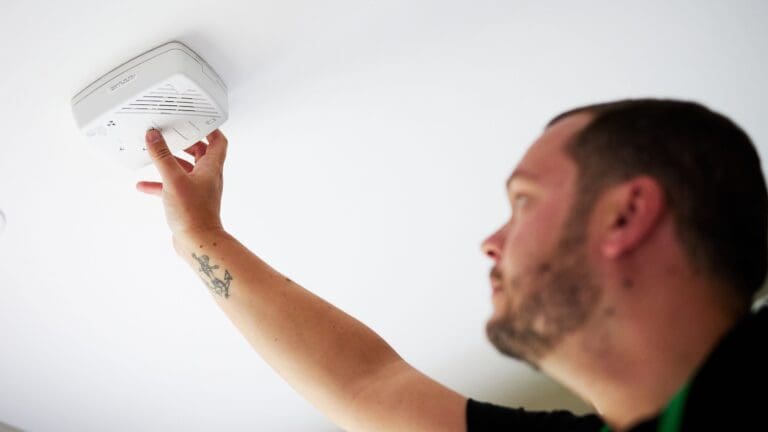
From the 6th of January 2025, following an amendment to Building Regulations Approved Document J in Wales, it is now a requirement for a carbon monoxide alarm to be installed upon the installation of a new or replacement fixed combustion appliance, of any fuel, in a dwelling.
An alarm is to be installed in any space (including connected spaces, e.g. attached garages and loft spaces) containing a fixed combustion appliance (including a fixed flued combustion appliance used for cooking). An additional alarm is required in high-risk accommodation such as a bedroom or principle habitable room (living room) where a flue passes through these rooms.
Unless indicated otherwise by the alarm manufacturer, the alarm should be installed in one of the following locations:
• between 1-3m from the appliance, and either;
• on the ceiling at least 300 mm from any wall; or
• on a wall as high as possible but not within 150 mm of the ceiling, and higher than any door or window on that wall.
The alarm should not be sited in an enclosed space (for example in a cupboard or behind a curtain); where it can be obstructed (for example by furniture); directly above a sink; next to a door or window; next to an extract fan; next to an air vent or similar ventilation opening; in an area where the temperature may drop below -10°C or exceed 40°C, unless it’s designed to do so; where dirt and dust may block the sensor; in a damp or humid location; or in the immediate vicinity of a cooking appliance.
The alarm should be manufactured to BS EN 50291 and be either:
• powered by a battery designed to operate for the working life of the alarm and incorporate a warning device to alert users when the working life of the alarm is about to expire;
or
• powered by mains electricity with fixed wiring (not plug-in types) incorporating a sensor failure warning device.
Image supplied by OFTEC
